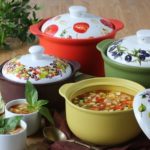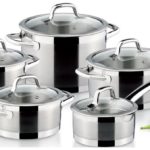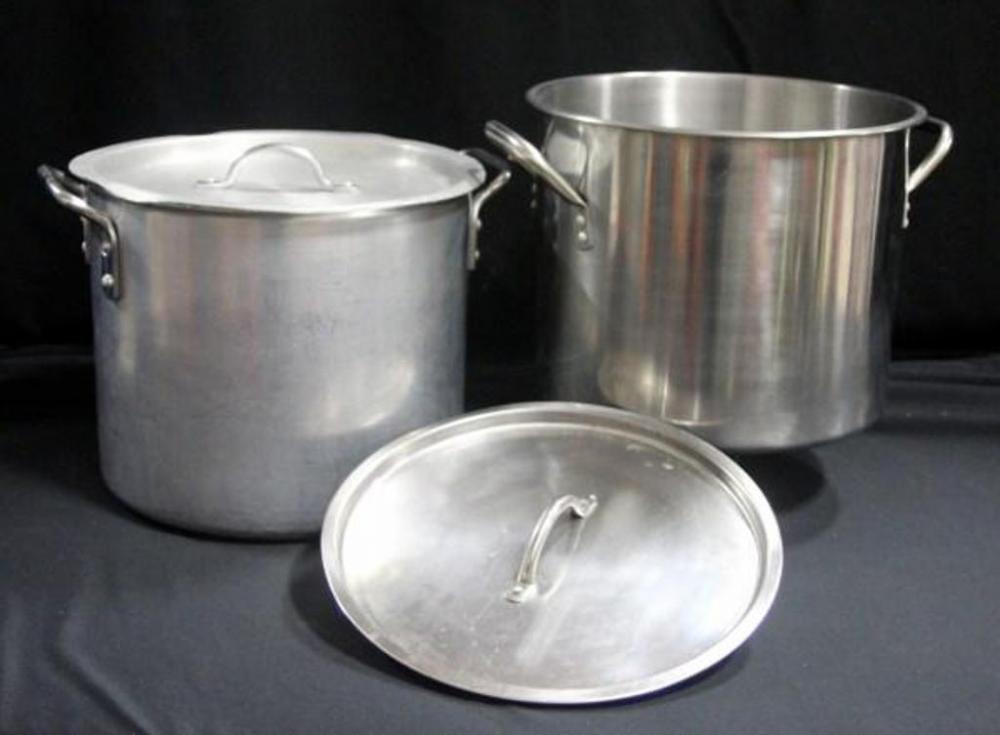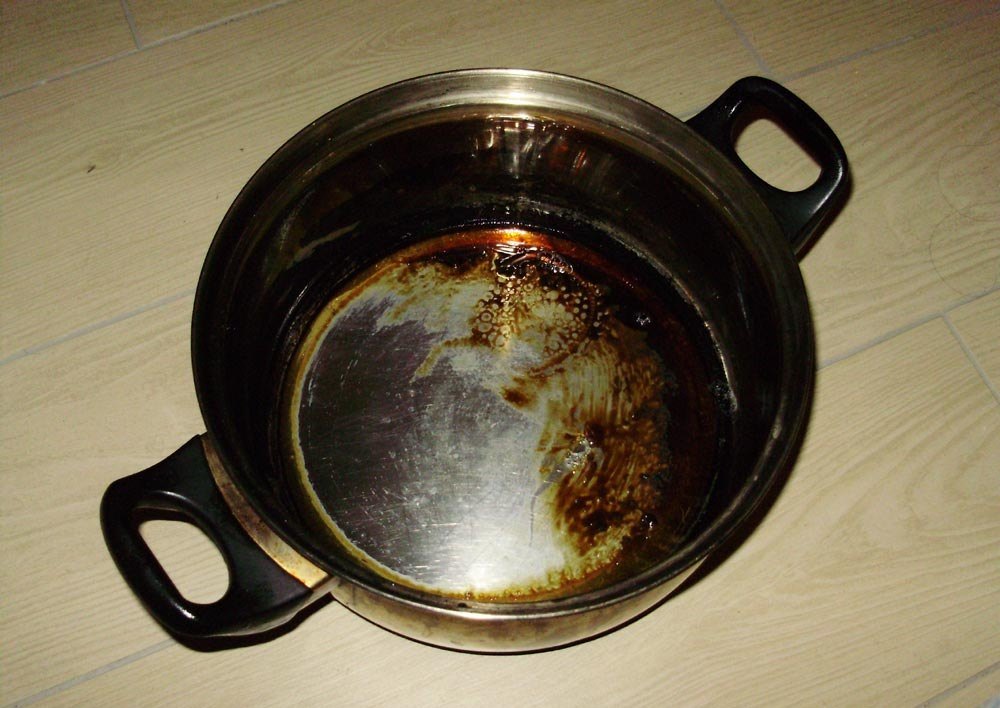Which pans are better - enameled or stainless steel?
Every housewife knows that the taste and smell of cooked dishes depends on the quality of kitchen utensils. After all, it is not uncommon for food to stick to the bottom of the pan or burn, and the fault is due to the incorrectly chosen dishes. From our article you will learn how to choose the right pan, depending on what you will cook in it.

The content of the article
Pros and cons of enamel pans
Enameled pans are considered to be classic and universal cookware. They have both a huge number of pros and cons.
Advantages:
- high thermal conductivity;
- food cooked in such a pan is rich in vitamins and minerals, and also retains its taste for a long time;
- the enamel coating protects the metal from corrosion;
- the inner surface does not absorb odors;
- no harmful substances are released;
- this type of cookware is compatible with all types of hobs, except induction ovens;
- suitable for preparing various dishes;
- Can be washed either by hand or in a dishwasher;
- It has a nice design that will suit any kitchen interior.
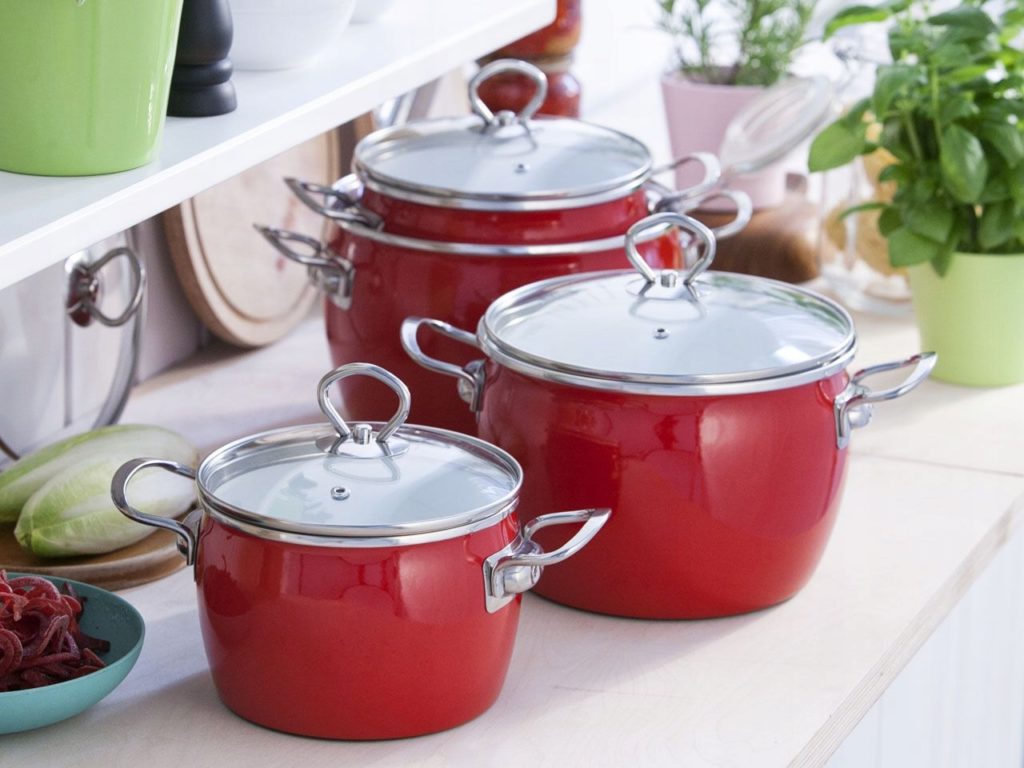
Attention! Enameled dishes should be washed only with special dishwashing gels.
Flaws:
- If used carelessly or after impacts, cracks and chips may appear on the vessel;
- when rust forms on the pan, this utensil becomes unsuitable for use;
- thin walls heat up quickly and unevenly;
- During cooking, food sticks to the bottom, which spoils its taste.
When purchasing this type of kitchen utensil, you must choose the one with an enamel coating of more than 2 mm. The thicker the coating, the longer its service life.
Advantages and disadvantages of stainless steel cookware
Stainless steel cookware differs from enameled cookware in that it is light, strong and durable. But it also has its advantages and disadvantages.
Pros of stainless steel:
- During cooking, food does not burn.
- This kitchen utensil is compatible with all types of cookers.
- Heats evenly and retains heat.
- Can be washed by hand and in the dishwasher.
- Has a wear-resistant coating.

Minuses:
- High price.
- Lids and handles are made of low-quality materials. The lid can burst, and the rubberized handles get very hot and fall off.
- Cooked food should not be left in this vessel.
- Due to the presence of places that are difficult to clean, the pan takes on an untidy appearance.
Which pan is better to choose, depending on the purpose of use
Of course, it’s good to have both an enamel pan and a stainless steel pan in your home. But if you do not have such an opportunity, then when choosing kitchen utensils you should proceed from the fact that you will cook in it.
An enamel pan is suitable for preparing the following dishes: soup, borscht, compote, jellied meat, boiling vegetables and meat products, making jam. It is not recommended to cook porridge or heat milk in this pan, as very often these products stick to the bottom and this can damage the enamel surface of the pan.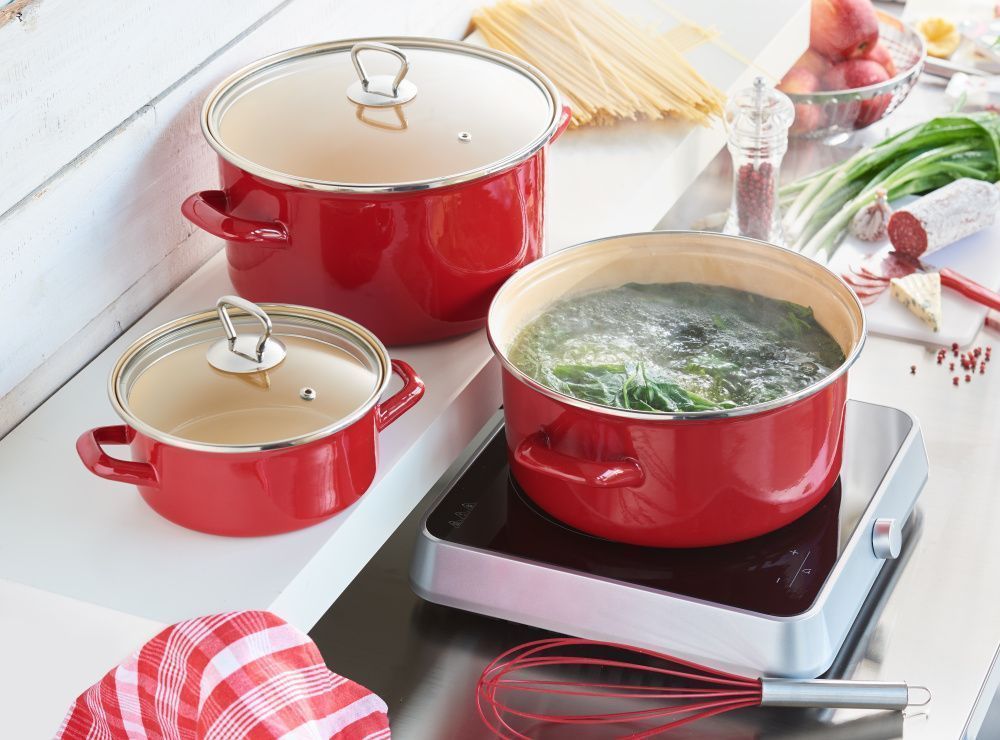
Important! When preparing dishes, you must use a wooden spatula so as not to damage the surface of the enamel coating.
Stainless steel cookware is perfect for preparing porridges and other main courses, soups, borscht, as well as food preservation. This type of cookware will be an excellent assistant in daily cooking.
Selecting a pan for the hob
When choosing cookware, it's also worth considering what kind of hob you have. If the purchased vessel is not compatible with the stove, then you will simply be throwing money away.
You can cook food in an enamel pan and stainless steel utensils on any hob except induction cooktops. An important condition for cooking on an induction hob is the presence of magnetic properties, and only metal cookware has them.

